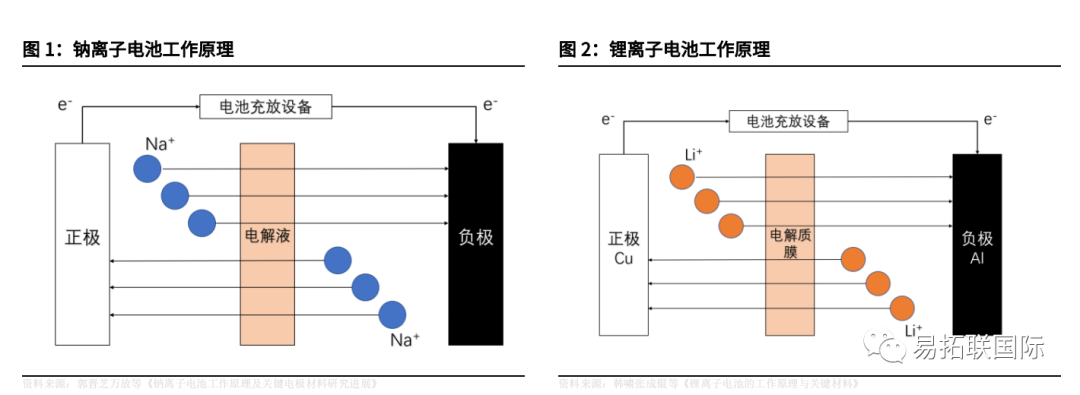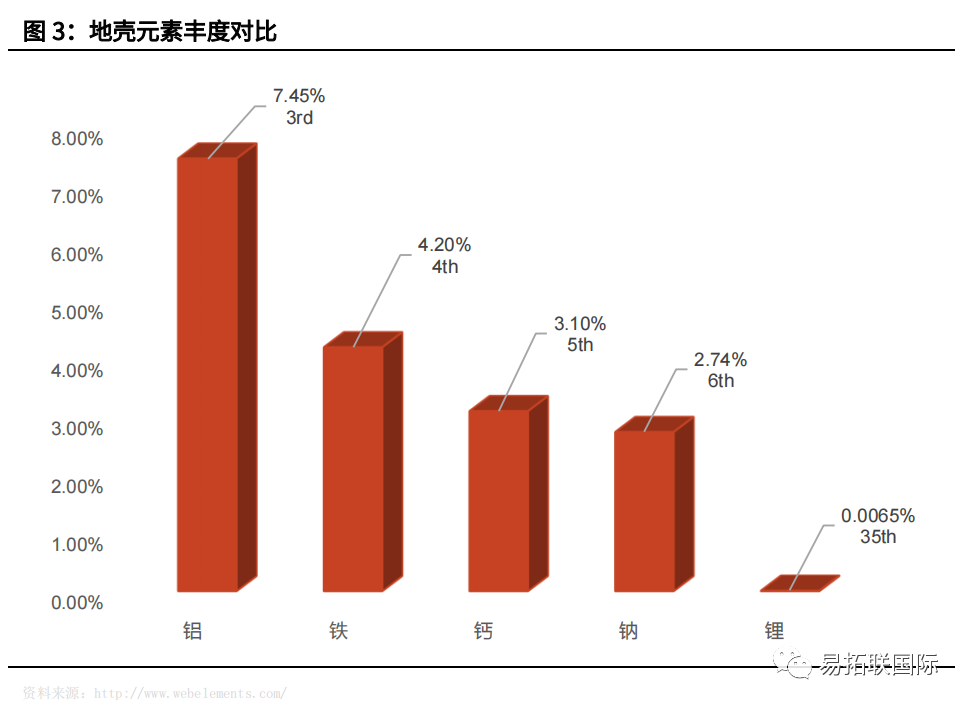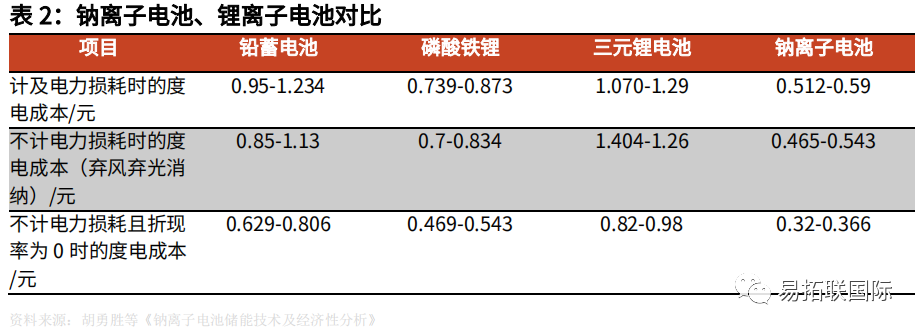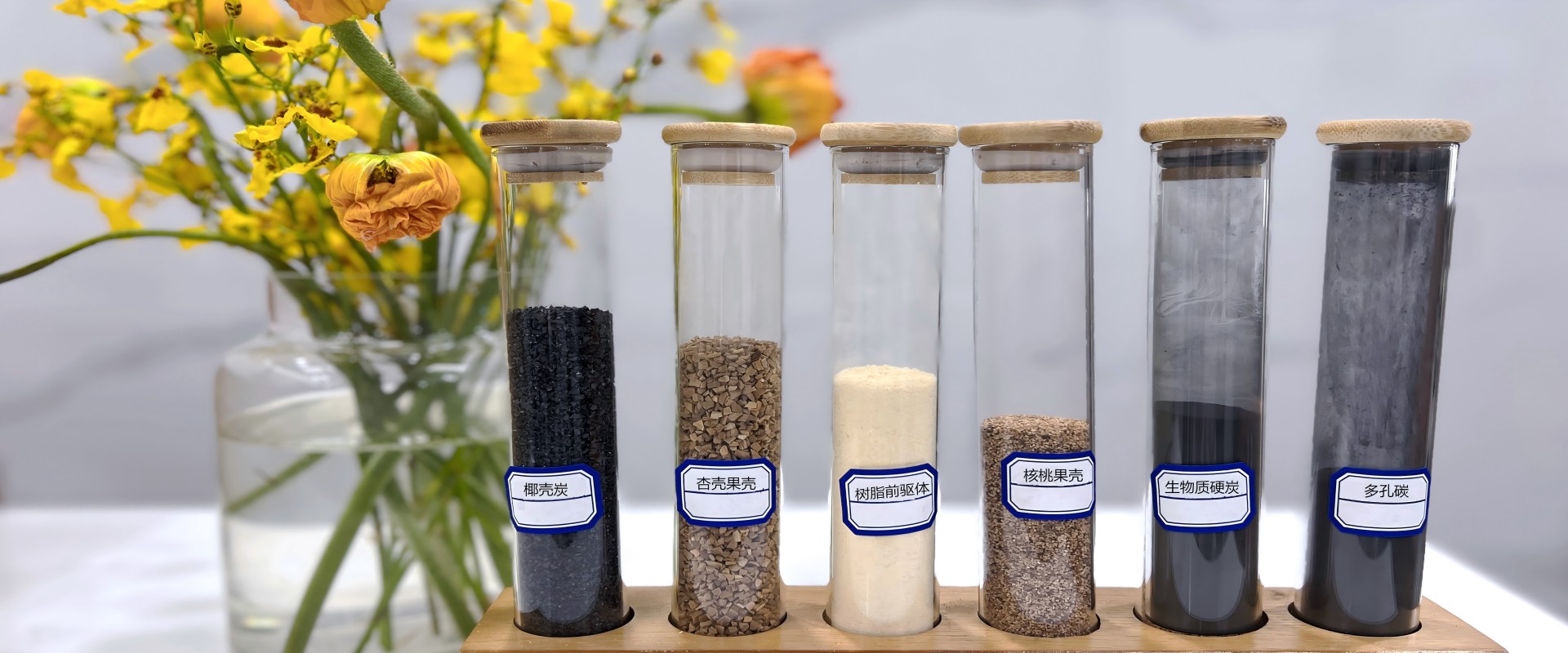Energy storage principle of Sodium-ion battery
Sodium-ion battery is a kind of secondary battery, which mainly depends on the movement of sodium ions between the positive and negative poles to work. Similar to the working principle of lithium ion battery, both are called "rocking chair" batteries. Sodium-ion battery is mainly composed of positive pole, negative pole, diaphragm, electrolyte and collector. The positive and negative electrodes are separated by a diaphragm to prevent short circuits. The electrolyte soaks into the positive and negative electrodes as the medium for ion flow, collecting and transmitting electrons. During charging, Na+is released from the positive electrode and inserted into the negative electrode through the electrolyte membrane, causing the positive electrode to be in a high potential sodium rich state and the negative electrode to be in a low potential sodium rich state. The discharge process is the opposite, in which Na+is released from the negative electrode and re embedded into the positive electrode material through the electrolyte membrane, restoring the positive electrode to a sodium rich state. To maintain charge balance, an equal number of electrons are transferred through the external circuit during the charging and discharging process, migrating with Na+between the positive and negative electrodes, causing oxidation and reduction reactions between the positive and negative electrodes. The working principle of Sodium-ion battery is basically similar to that of lithium ion, which also lays a good foundation for the industrialization of sodium battery.

Energy storage advantages and economic analysis of Sodium-ion battery
Sodium and lithium are both alkali metal elements and have similar physical and chemical properties. Both can serve as carriers for metal ions in batteries. In recent years, with the large-scale application of lithium-ion batteries, lithium resources have entered a supply-demand pattern that is in short supply. As of July 29, 2022, the price of battery grade Lithium carbonate is 470000 yuan/ton, 8.3 times higher than that at the beginning of 2021. In June 2022, China produced 590000 new energy vehicles, with a penetration rate of 23.6%. Since February 2022, the penetration rate of domestic electric vehicle production has remained above 20%. According to the view of Everbright Securities in the High Prosperity of Lithium, Cobalt and Rare Earth, New Electrochemical System Incubates Vitality - Energy Metals 2022 Medium term Investment Strategy, the lithium industry will still be in a tight supply state from 2022 to 2023, and it is not ruled out that the lithium price will return to more than 500000 yuan/ton in the second half of 2022. However, sodium resources have higher elemental abundance in the crust and lower costs. As of July 29, 2022, the price of sodium carbonate was only 2782 yuan/ton.

From the perspective of battery performance, Sodium-ion battery is also excellent. On May 10, 2022, CATL, the leading edge of the battery industry, said on the interactive platform that the company would release Sodium-ion battery in 2021. Its single cell energy density would be as high as 160Wh/kg. After 15 minutes of charging at room temperature, the power could reach more than 80%. In the low temperature environment of -20% ℃, it also has a discharge retention rate of more than 90%, and the system integration efficiency could reach more than 80%. The company is committed to promoting the industrialization of Sodium-ion battery in 2023. The technical feasibility of Sodium-ion battery can be considered from the following aspects.
(1) Sodium resources have abundant reserves, uniform distribution, and low costs, which are sufficient to support the sustainable development of electrochemical energy storage.
(2) Similar to the working principle of lithium-ion batteries, most production equipment is compatible, with less short-term or long-term equipment and process investment, which is conducive to cost control.
(3) The collector of positive and negative electrodes of Sodium-ion battery can use cheap aluminum foil, which can further reduce the cost of battery system.
(4) The Solvation energy of sodium ion is lower than that of lithium ion, that is, it has better interfacial ion diffusion ability; Meanwhile, the Stokes diameter of sodium ions is smaller than that of lithium ions, and electrolytes with the same concentration have higher ion conductivity than lithium salt electrolytes; Higher ion diffusion capability and higher ion conductivity mean that the Sodium-ion battery has better rate performance, stronger power output and acceptance capability. The disclosed Sodium-ion battery has a charge discharge rate of 3C or above, which can be well applied in large-scale energy storage and frequency modulation applications.
(5) According to the current preliminary high and low temperature test results, the Sodium-ion battery has better high and low temperature performance. It can release more than 70% of its capacity at -40 ℃, and can be recycled at 80 ℃. This will reduce the power quota of the air conditioning system at the energy storage system level, and also reduce the online time of the low-temperature control system, thereby reducing the input cost and operating cost of the energy storage system.
According to the literature "From basic research to engineering exploration" published by Rong Xiaohui in March 2020, the raw material cost of lithium battery is 0.43 yuan/Wh, and that of Sodium-ion battery is 0.29 yuan/Wh, 32.6% lower than that of lithium battery. The average market price of Lithium carbonate in March 2020 is 50300 yuan/ton; The average market price of sodium carbonate is 1481 yuan/ton. On July 29, 2022, the price of Lithium carbonate will be 470000 yuan/ton, and the corresponding cost of lithium ion battery raw materials will rise to 0.77 yuan/Wh; The average price of sodium carbonate in the market is 2782 yuan/ton, with a single ton rising by nearly 1301 yuan, far less than the price increase of Lithium carbonate.

Although the energy density and cycle life indicators of sodium battery cores are weaker than those of lithium batteries, their cost advantage still makes them highly economical in downstream application scenarios such as energy storage. According to the conclusions in the paper "Energy storage and Economic Analysis of Sodium-ion battery" by Hu Yongsheng and others in June 2022, taking the energy storage of lead battery, Lithium iron phosphate battery, ternary lithium battery and Sodium-ion battery as examples, the model is used to calculate the kilowatt hour cost of various batteries in the whole life cycle under the peak shaving application scenario. Considering the power loss, the upper limit of the kilowatt hour cost of sodium battery is respectively higher than that of lead battery The Lithium iron phosphate battery and ternary lithium battery are 52.2%, 32.4% and 54.3% lower.





 Phone:+86 13861313805
Phone:+86 13861313805
 E-mail:louis.han@e-tygroup.com
E-mail:louis.han@e-tygroup.com
 Add:Room 2809, Building Ⅱ, The Gate of the Orient, No. 199 Xinggang Street, Suzhou Industrial Park, Suzhou, China.
Add:Room 2809, Building Ⅱ, The Gate of the Orient, No. 199 Xinggang Street, Suzhou Industrial Park, Suzhou, China.
